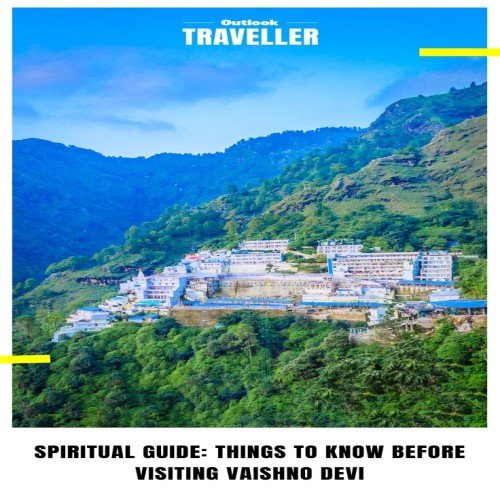Mathura, a city steeped in myth, spirituality, and culture, stands as one of the most sacred sites in India. Known as the birthplace of Lord Krishna, Mathura is a pilgrimage hub for Hindus and draws visitors from across the globe seeking a glimpse into its ancient heritage and vibrant traditions. This guide highlights some of the best experiences Mathura offers, from visiting temples and ghats to experiencing festivals and exploring nearby attractions.
1. A Brief History of Mathura
Mathura’s roots stretch back over 2,500 years, as the city has been a significant center for both Hinduism and Buddhism. The city finds mention in ancient texts and scriptures as the birthplace of Lord Krishna, making it a sacred destination. Over the centuries, Mathura has seen the rise and fall of numerous empires, each leaving behind architectural and cultural imprints. From ancient temples to Mughal and British influences, the city is a mosaic of history and spirituality.
2. Key Places to Visit in Mathura
Krishna Janmabhoomi Temple Complex
This is the most revered site in Mathura, believed to be the exact birthplace of Lord Krishna. The complex houses multiple shrines dedicated to Krishna and Radha, with beautiful sculptures, murals, and idols that narrate the divine stories of Krishna's life. A serene atmosphere combined with a sense of divinity makes this place a must-visit.
Dwarkadhish Temple
Built in the early 19th century, this temple is dedicated to Dwarkadhish, a form of Lord Krishna. The temple boasts stunning architecture with intricate carvings and pillars, and the lively, colorful ambiance, especially during Janmashtami and Holi, is worth experiencing.
Vishram Ghat
Situated on the Yamuna River, Vishram Ghat is where Krishna is believed to have rested after defeating the tyrant king Kansa. It’s a sacred site for pilgrims, and the evening aarti, with its hundreds of oil lamps reflecting on the river, is a sight to behold.
Gita Mandir
The Gita Mandir, also known as the Birla Mandir, is a relatively modern temple that stands as a tribute to the teachings of the Bhagavad Gita. The temple walls are inscribed with verses from the scripture, offering visitors a peaceful space to reflect.
Government Museum (Mathura Museum)
For history enthusiasts, the Government Museum, or Mathura Museum, is an excellent place to explore artifacts, sculptures, and relics from various periods of Indian history. Known for its collection of Gupta and Kushan-era sculptures, the museum provides insights into the rich cultural heritage of Mathura.
3. Experiencing the Festivals
Janmashtami
Janmashtami, the birthday of Lord Krishna, is the most celebrated festival in Mathura. The entire city comes alive with devotional fervor, colorful processions, dramatic enactments of Krishna’s life (Raas Leela), and temple decorations. The Krishna Janmabhoomi Temple becomes the focal point of celebrations, attracting pilgrims from around the world.
Holi
Holi in Mathura and nearby Vrindavan is an experience like no other. The festival of colors is celebrated with such enthusiasm that it attracts travelers from across the globe. The temples and streets are filled with people playing with vibrant colors, singing bhajans, and participating in the famous "Lathmar Holi," where women playfully hit men with sticks as a reenactment of a Krishna-Radha story.
4. Day Trips and Nearby Attractions
Vrindavan
Just a 10-kilometer drive from Mathura, Vrindavan is the place where Krishna is said to have spent his childhood. The town is dotted with temples, each with unique charm and history. The Banke Bihari Temple and ISKCON Temple are particularly popular among visitors, as well as the serene Yamuna ghats.
Goverdhan Hill
Goverdhan Hill holds a prominent place in Krishna’s mythology. It is believed that Krishna lifted the hill on his little finger to protect the people from the wrath of the rain god Indra. Pilgrims often perform the 21-kilometer parikrama (circumambulation) of the hill, which is a significant spiritual practice.
Barsana
Known as Radha’s village, Barsana is famous for its Lathmar Holi festivities and the Radha Rani Temple. The temple is perched on a hill, and the view from the top offers panoramic vistas of the surrounding landscape.
5. Local Cuisine and Shopping in Mathura
Local Cuisine
Mathura’s cuisine is a delight for food lovers. Being a holy city, it offers predominantly vegetarian fare. Make sure to try local delicacies like peda (a milk-based sweet unique to Mathura), kachori, lassi, and chaat. The street food here is known for its distinct flavors and freshness.
Shopping
Mathura offers a variety of local handicrafts, especially religious souvenirs, jewelry, paintings, and traditional clothing. The marketplaces near temples and ghats have a vibrant selection of souvenirs and local items to take back home.
6. Best Time to Visit Mathura
The best time to visit Mathura is from October to March, as the weather is more comfortable for sightseeing and outdoor activities. Janmashtami (August) and Holi (March) are the most significant times for visiting if you wish to experience Mathura’s grand festivals, though be prepared for crowds.
7. Tips for Travelers
- Respect local customs and traditions, especially around temples.
- Be mindful of your belongings, especially in crowded areas during festivals.
- Early mornings and evenings are ideal times to visit the ghats and temples, as the temperatures are cooler, and the ambiance is serene.
Conclusion
Mathura is a city that offers more than just temples and festivals. It’s a journey into the heart of Indian spirituality and tradition, where every corner has a story, every festival celebrates divine love, and every temple echoes the songs of devotion. Whether you’re visiting for its religious significance or cultural richness, Mathura promises an unforgettable experience that lingers long after you’ve left.




